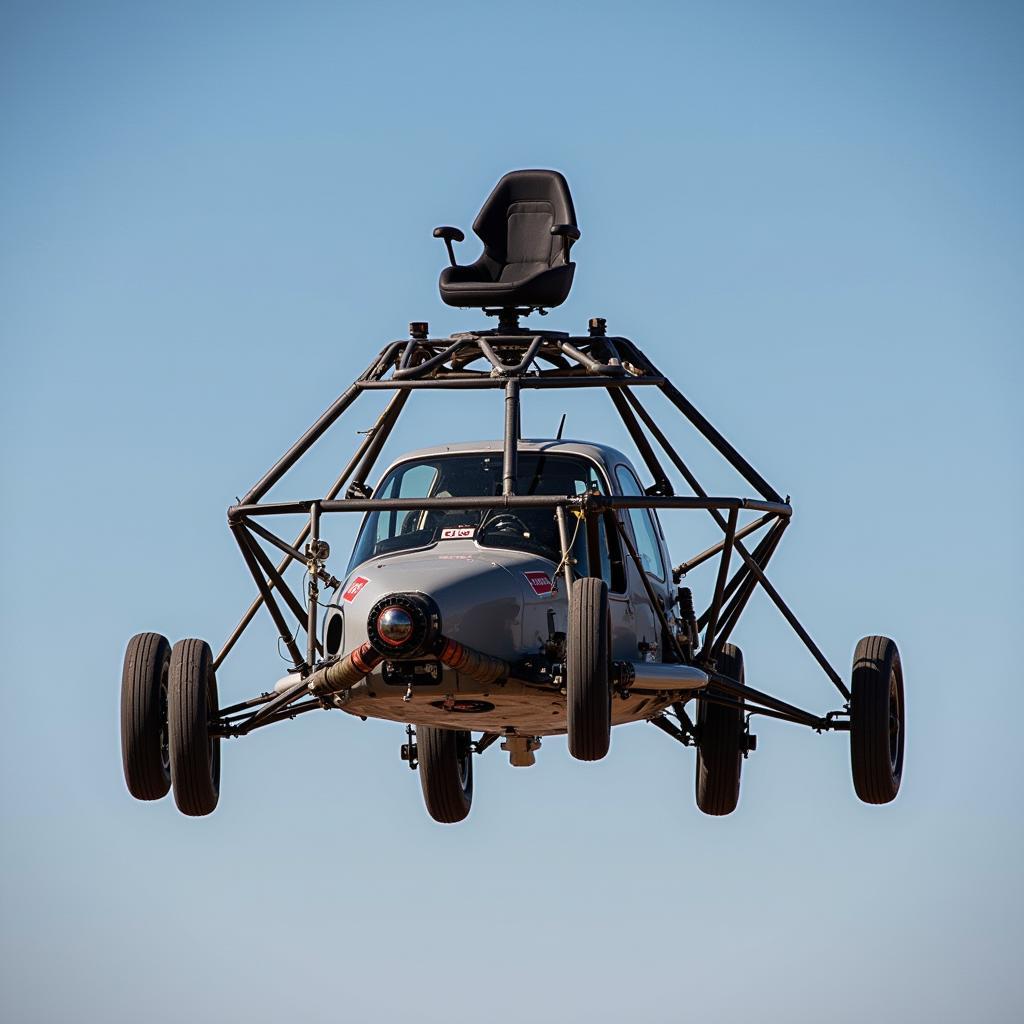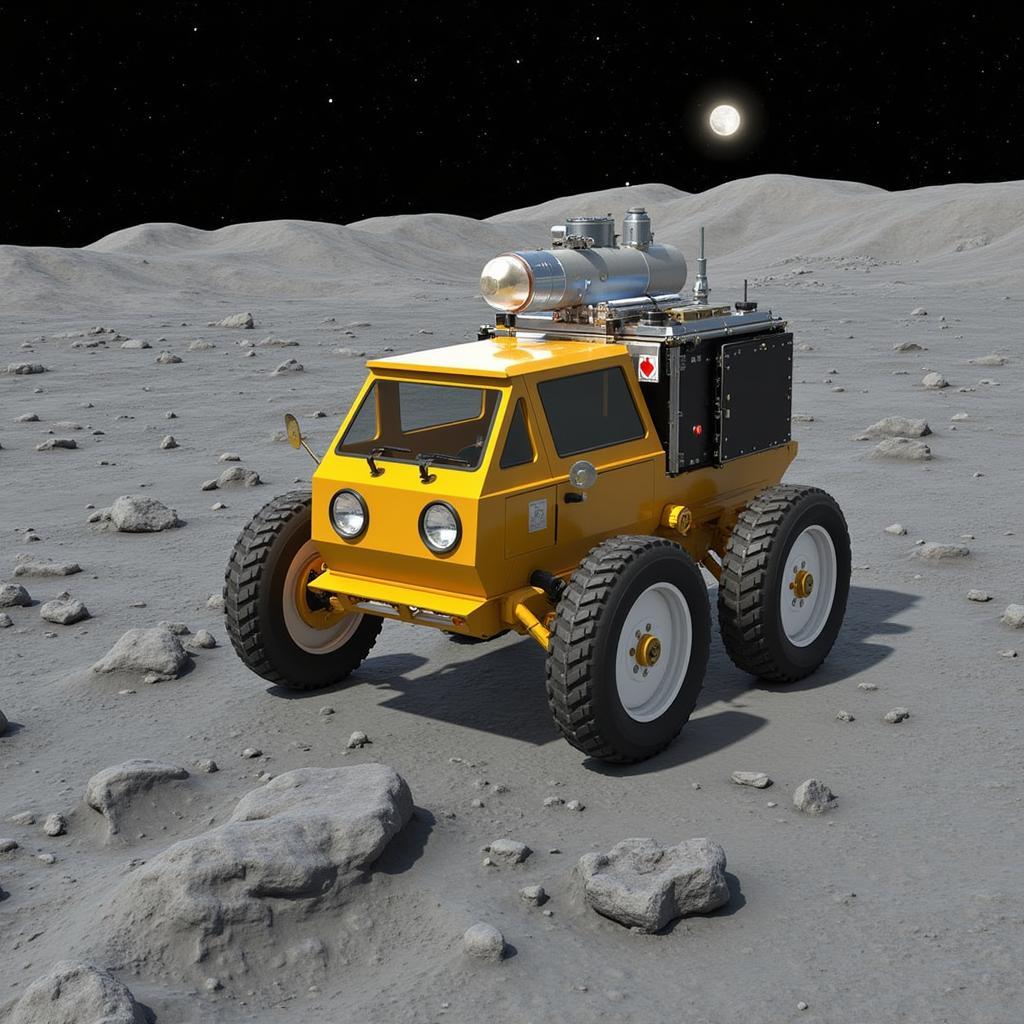The Lunar Landing Research Vehicle, often referred to as the LLRV or nicknamed the “flying bedstead,” played a pivotal role in NASA’s Apollo program. This unique and somewhat bizarre-looking craft allowed astronauts to experience the challenges of lunar gravity and practice crucial landing maneuvers right here on Earth, paving the way for a successful lunar landing.
Simulating the Moon: How the LLRV Worked
 Lunar Landing Research Vehicle in Flight
Lunar Landing Research Vehicle in Flight
The LLRV was essentially a testbed designed to replicate the lunar descent module’s flight characteristics in a lunar gravity environment. To achieve this, the vehicle used a powerful jet engine mounted vertically in a gimbal, which provided thrust equivalent to five-sixths of the vehicle’s weight, effectively counteracting five-sixths of Earth’s gravity. This setup allowed pilots to experience a sense of weight and inertia similar to what they would encounter on the moon.
Training for the Unknown: The LLRV’s Impact
The LLRV provided a crucial training platform for Apollo astronauts. By familiarizing them with the handling and response of a spacecraft in lunar gravity, it allowed them to practice crucial maneuvers like:
- Altitude Control: Maintaining a stable hover and adjusting altitude in response to the lunar surface.
- Lateral Movement: Controlling the vehicle’s movement sideways to pinpoint landing locations.
- Pitch and Yaw Control: Adjusting the vehicle’s nose direction for precise maneuvering.
- Emergency Procedures: Simulating and responding to various system failures during descent.
This rigorous training regimen proved invaluable, giving astronauts the confidence and experience to execute the challenging lunar landing with precision.
Beyond the LLRV: The Lunar Landing Training Vehicle (LLTV)
 LLTV on Simulated Lunar Surface
LLTV on Simulated Lunar Surface
Building on the success of the LLRV, NASA developed the Lunar Landing Training Vehicle (LLTV). This upgraded version incorporated a second, smaller jet engine for improved control and stability, along with a more realistic mockup of the lunar module descent stage. The LLTV provided an even more accurate simulation of the lunar landing experience, further honing astronaut skills.
The Legacy of the LLRV: A Stepping Stone to the Stars
The LLRV and LLTV stand as testaments to human ingenuity and the crucial role of rigorous testing and simulation in space exploration. These unique vehicles provided a vital bridge between theoretical calculations and the real-world challenges of lunar landing, ultimately contributing to the triumph of the Apollo missions. The lessons learned from these early lunar landing simulators continue to inform the development of modern spacecraft and training programs, shaping the future of space exploration.